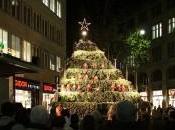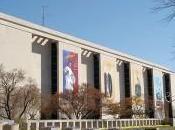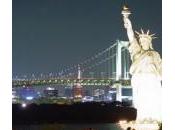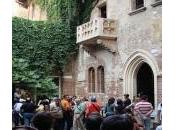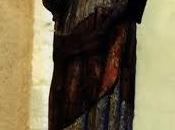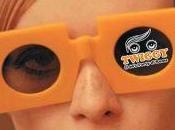
the parade
We are right now in the carnival. You bought the masks and the costumes you want to wear? You can also rent them just for the day of the carnival, to be someone different from yourself during that day. Just to play and have some fun.Italy is rich in Carnival parties and every country, city, district organizes some events to enjoy.
Let's see what happens in the Valley of the Grand St. Bernard. We know that here it is really cold but the colours and the passion of this carnival overcome every difficulty. Few people know this carnival, but it is one of the oldest in Italy.

Carnival coumba freide (http://www.lovevda.it)
Its origins are a bit indefinite: someone say that it was dated back to the Napoleon time – in fact some costumes are inspired by the costumes of the French soldiers. Someone believe the popular story: two elderly wanted to convey to the wedding and the people did not want to wear the normal dress, so they decided to dress up in the unusual clothes. All the tradition symbols -we can find in this Carnival - might suggest that it was pre-existing but it was influenced by Napoleon.
You should however remember that in this valley- and all over the Italian Alps - there is a rich heritage of the traditions and the beliefs. Some objects - used in the Carnival parades - are symbols to ward off the evil spirits all over this region: an example? The mirrors on the costumes cast out the ill-omened spirits.

Toque and tocca ( http://www.lovevda.it/)
The Coumba Freida (which translated means cold air) is organized with specific rules: the order of the masks - that appear in the parade - is fixed and it can not be changed. This because it is closely linked to the folk tradition of the place and everything has its specific meaning.As first in the parade appears Napoleon, then the musicians, the devil, the "demoiselles", the “arlecchini” and the masks. Some of these masks have black clothes to symbolize the winter, some other have coloured clothes to symbolize the spring. Then the "Toque" and "tocca" arrive in the parade : they are the representation of the two elderly told by the popular story. The parade goes on with the masks of the bears and their trainer. The priest and the doctor up the parade (one attends the men , one attends the souls). All participate in this carnival. The masks go in and out of all the houses (we are talking about small countries, of course) where they can eat and drink.

Napoleon http://www.lovevda.it/
What to do? You have to join the parade and follow the masks to have fun and to be a part of this wonderful carnival event. This carnival is itinerant then it moves to all the villages in the Valle del Gran San Bernardo. In the path is also included the village of Ollomont where I had sees the race of the mules in the summer. So I will then return there t o enjoy the carnival and to visit the other villages!For the dates of the carnival 2013 visit www.lovevda.it

The bear mask www.lovevda.it
Siamo oramai nel vivo del carnevale. Avete comprato la maschera e il costume che volete indossare? Potete anche affittarlo basta che il giorno di carnevale siate qualcun altro diverso da voi stessi: tanto per giocare e divertirsi un po’. L’Italia è tutta in festa ed ogni paese, città quartiere organizza eventi in cui divertirsi. Proviamo a vedere cosa succede nella Valle del gran San Bernardo. Partiamo dal presupposto che fa veramente freddo ma i colori e la passione di questo carnevale superano ogni difficoltà. Pochi conoscono questo carnevale ma è uno dei più antichi d’Italia. Le sue origini sono un po’ discusse: chi afferma che sia nato ai tempi di Napoleone per certi costumi che si ispirano ai costumi dei soldati dell’epoca e chi invece abbraccia la storia popolare. Due anziani volevano convogliare a nozze e gli abitanti non volendo indossare l’abito della domenica, decisero di vestirsi con abiti inconsueti. Tutta questa tradizione potrebbe far pensare che questo carnevale fosse preesistente ma che fosse stato influenzato da Napoleone. Bisogna comunque ricordare che in queste valle, e in tutte le nostre alpi c’è un passato ricco di tradizioni e di credenze per cui alcuni oggetti che vengono usati nelle sfilate sono simboli per scacciare gli spiriti maligni: un esempio? Gli specchi sui costumi scacciano gli spiriti nefasti. La Coumba Freide ( che tradotto vuol dire aria gelida) è organizzato comunque secondo schemi ben precisi: l’ordine delle figure che appaiono in sfilata è prestabilito e non può essere cambiato. Questo proprio perché è strettamente legato alla tradizione folcloristica del luogo e tutto ha un suo significato ben preciso. Abbiamo Napoleone , i suonatori, il diavolo, le “demoiselles” , gli arlecchini e le maschere. Qualcuna di queste maschere ha gli abiti neri a simboleggiare l’inverno, altre colorati a simboleggiare la primavera. Sfilano il “ Toque” e la “ tocca” che sono la rappresentazione dei due anziani di cui si narra nella versione popolare, gli orsi e il domatore. Il curato e il dottore chiudono il corteo ( uno cura gli uomini l’altro le anime). Tutti partecipano al carnevale e le maschere passano di case in case ( stiamo parlando di piccoli paesi ovviamente) dove si rifocillano. Cosa fare? Bisogna unirsi alla parata e seguire le maschere per divertirsi ed essere parte integrante di questa magnifica manifestazione carnevalesca.Questo carnevale è itinerante quindi gira per i vari paesi della Valle del Gran San Bernardo. Nel percorso è anche compreso il comune di Ollomont in cui ho avuto occasione di vedere la corsa dei muli in estate. Ci si torna quindi per il carnevale e si vistano anche gli altri comuni!
Per le date di quello di quest’anno www.lovevda.it
